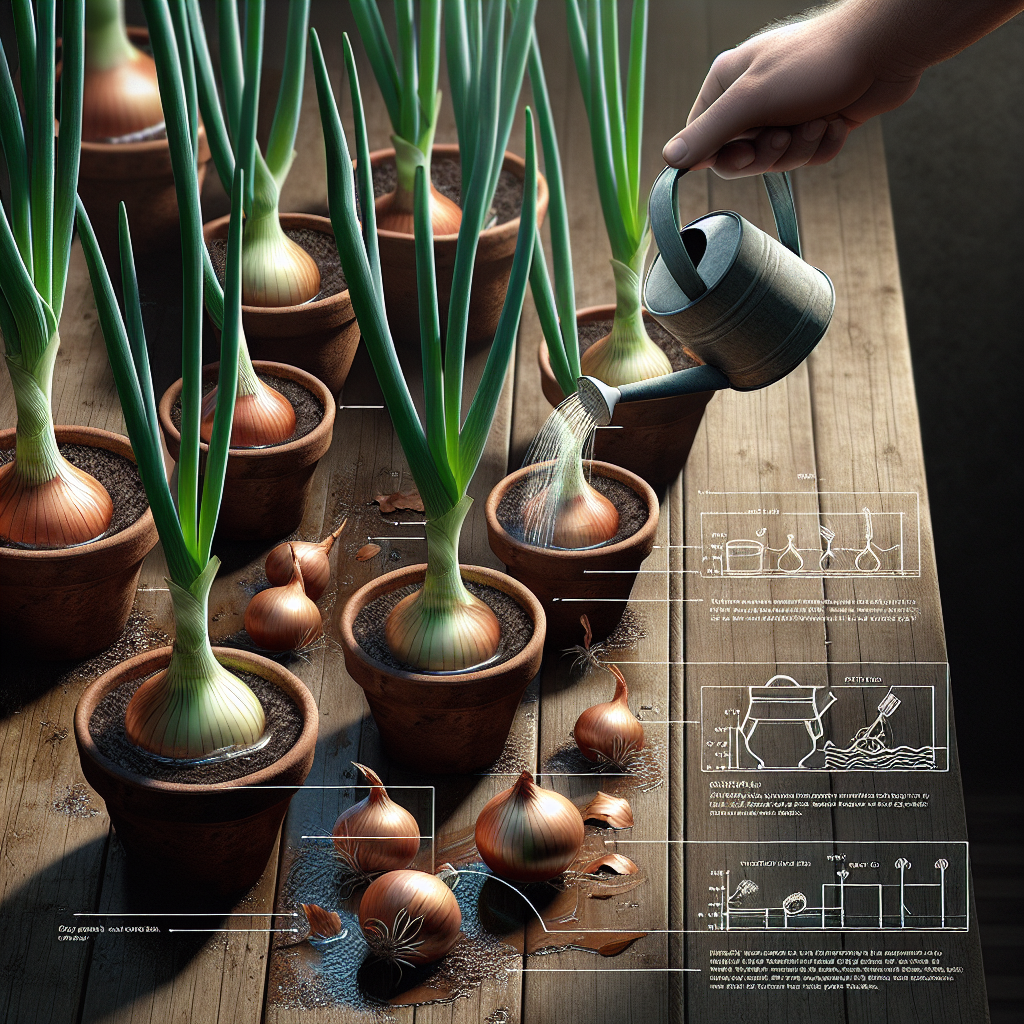Onions are a versatile and widely used vegetable in many different cuisines. They are easy to grow, even if you have limited space, as they can be successfully grown in pots or containers. However, growing onions in pots comes with its own set of challenges, particularly when it comes to watering. Proper watering is essential for the health and growth of onions grown in pots, as they rely on you for their water supply. In this article, we will provide some tips for watering onions grown in pots to help you achieve a successful harvest.
1. Choose the right container: When growing onions in pots, it is important to choose a container that is large enough to accommodate the root system of the plant. Onions have shallow roots, so a pot that is at least 6 inches deep should be sufficient. Make sure the pot has drainage holes at the bottom to prevent water from accumulating and causing root rot.
2. Use well-draining soil: Onions prefer well-draining soil that allows excess water to flow out easily. A good potting mix for onions should be light and airy, such as a mix of equal parts peat moss, perlite, and vermiculite. Avoid heavy soils that retain moisture for too long, as this can lead to fungal diseases and root rot.
3. Water consistently: Onions require regular watering to keep the soil moist but not waterlogged. Check the moisture level of the soil by sticking your finger into it up to your knuckle – if it feels dry, it’s time to water. During hot weather or when the plants are actively growing, you may need to water every 2-3 days.
4. Water deeply: When watering onions in pots, make sure to water deeply to encourage strong root growth. Water until you see excess water draining out of the bottom of the pot – this ensures that moisture reaches all parts of the root system. Avoid shallow watering that only moistens the top layer of soil.
5. Avoid overhead watering: Onions grown in pots are more prone to fungal diseases if their leaves come into contact with water too frequently. To prevent this, avoid overhead watering and instead use a drip irrigation system or water directly at the base of the plant.
6. Mulch around plants: Adding a layer of organic mulch around your onion plants can help retain moisture in the soil and reduce evaporation. Mulch also helps regulate soil temperature and suppresses weed growth around your plants.
7.Water sparingly during dormant periods: Onions go through different growth stages throughout their growing season – during dormant periods such as winter or when plants are not actively growing, reduce watering frequency significantly as they require less moisture.
8.Divide your watering routine – Morning time is usually recommended for onion plants because it’s during this time that there’s less evaporation than any other period within the day due to lower temperatures compared with afternoons when temperatures tend rise which leads quickly evaporating waters but also avoid wetting your onion leaves
9.Use rainwater whenever possible – Rainwater is generally better for your onion plants than tap water because it’s free from harmful chemicals like Fluorine while also providing them with much-needed nutrients such nitrogen since tap waters hardly contain these vital micronutrients
10.Consider using self-watering containers – If you struggle with consistency when it comes down remembering how frequently need keep an eye on watering schedule then consider switching self-watering container might be easier way maintain healthy hydration levels within potted regardless busy lifestyle giving lots flexibility by cutting back number times daily visits required check them
Overall, proper watering is key to successfully growing onions in pots…













